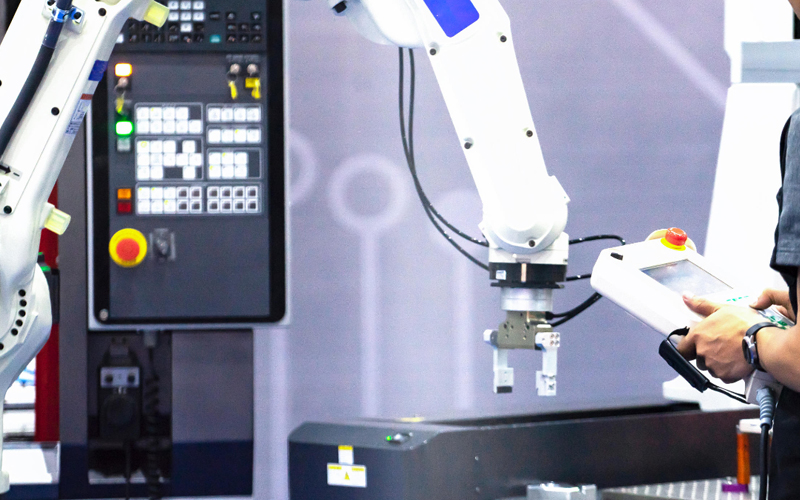According to research, employees in businesses without RPA spend 10%-25% of their time on repetitive tasks. Over 50% of companies spend between $5 and $25 to process each invoice manually.
To tackle this, market indicators suggest a rapid growth in RPA adoption across technology, healthcare, finance, retail and CPG, education, public sector, and other industries. Robotic process automation (RPA) offers significant advantages in streamlining workflows and increasing operational efficiency by automating repetitive tasks. However, its implementation comes with a set of challenges.
Top RPA implementation challenges
According to a leading accounting company, 50% of RPA implementation projects fail due to incompetent solutions and improper implementation. To ensure success, we must first understand the challenges –
Integration with existing systems
45% of companies using an AI system have faced difficulty in its implementation and integration. A major reason is synchronisation with existing systems.
RPA systems must seamlessly integrate with existing systems encompassing different technologies, protocols, and user interfaces. The technology has to work alongside mobile apps, IoT devices, and SaaS platforms through APIs, database access, custom connectors, middleware, and screen scraping.
Scalability
Automated processes need to evolve as an organisation's data flow and workload increase. Since it is not feasible to keep adding robots, the existing ones should be able to handle scalability without degrading the performance.
System maintenance
Once the robots start functioning, a deviation from the pre-programmed sequence may cause errors. The RPA platform should be able to adjust to updated regulations, business requirements, and technology additions. Running stress tests, copying data to a larger unit, cleaning the cache, and appointing the RPA owner must undergo automation.
Change management
An RPA platform must consider technological and people changes over time. This becomes an opportunity to revisit current operations. The platform must have senior management's buy-in and a clear vision for workflow automation and change management.
IT infrastructure
A robust IT infrastructure is the baseline for a functional RPA model. It must have the necessary processing power to keep the scripts running. Since the RPA bots process sensitive customer data, these records should be kept safe through unique log credentials.
Other security challenges include identity thefts, data breaches, system vulnerabilities, compromised credentials, and a lack of system monitoring.
Resistance to change
RPA may disrupt the existing processes and work schedules, which may seem like a threat to existing employees. Therefore, you need efficient communication within the team. The employees must take RPA tools as performance enhancers.
However, if the organisational culture resists change, new initiatives in RPA implementation may become challenging.
Process identification and prioritisation
Before implementation, one must know the objectives and the processes that need automation on priority. RPA may be effective with repetitive and low-value work, such as data entry, but not with complex and inconsistent tasks like cognitive creativity.
Cost analysis
Assigning RPA to tasks with the highest headcount may not result in immediate savings, especially when it involves exception handling, cognitive ability, and creativity. A business must know the initial cost of implementation including licenses, and the scope and complexity of work, infrastructure, and long-term maintenance.
5 Pillars to overcome RPA implementation challenges
Evaluate existing processes
Identify the processes that need automation and define and quantify the benefits that automation will bring to these processes. Prioritise these tasks based on low, medium, or high complexity.
Start with critical processes that bring the highest impact before you proceed with medium or low-complexity tasks.
Draft a detailed RPA roadmap
Establishing measurable metrics is necessary to understand the outcomes of RPA implementation effectively. Additionally, a robust plan is crucial for scaling, identifying technologies to leverage, and implementing an RPA strategy as part of a detailed roadmap.
Prioritise savings and ROI
Automating high-value, customer-facing, and standardised tasks will bring immediate ROI. Focusing on minor tasks rather than automating entire workflows is often more beneficial in the long term.
Get all stakeholders on onboard
Since the goal is to increase efficiency, boost profits, and assist employees with daily tasks, it is important to onboard them. Educate the employees and managers and consider their feedback. This inclusive approach fosters communication and alignment across departments, ensuring smooth RPA implementation.
With meticulous planning and selection of appropriate RPA systems, you can achieve the desired ROI and anticipated outcomes. Engaging an expert RPA consultant can be instrumental in navigating this process effectively.
How can Infosys BPM help in RPA implementation?
Business process management services involve rule-based and knowledge-based tasks across industries and functions. Robotic process automation can automate these tasks, creating streamlined processes with minimal human intervention. Infosys BPM blends RPA with AI for intelligent process automation to deliver impressive results, including saved time, increased productivity, significant cost savings, and enhanced customer experience.
Know more about RPA advisory services at Infosys BPM.







